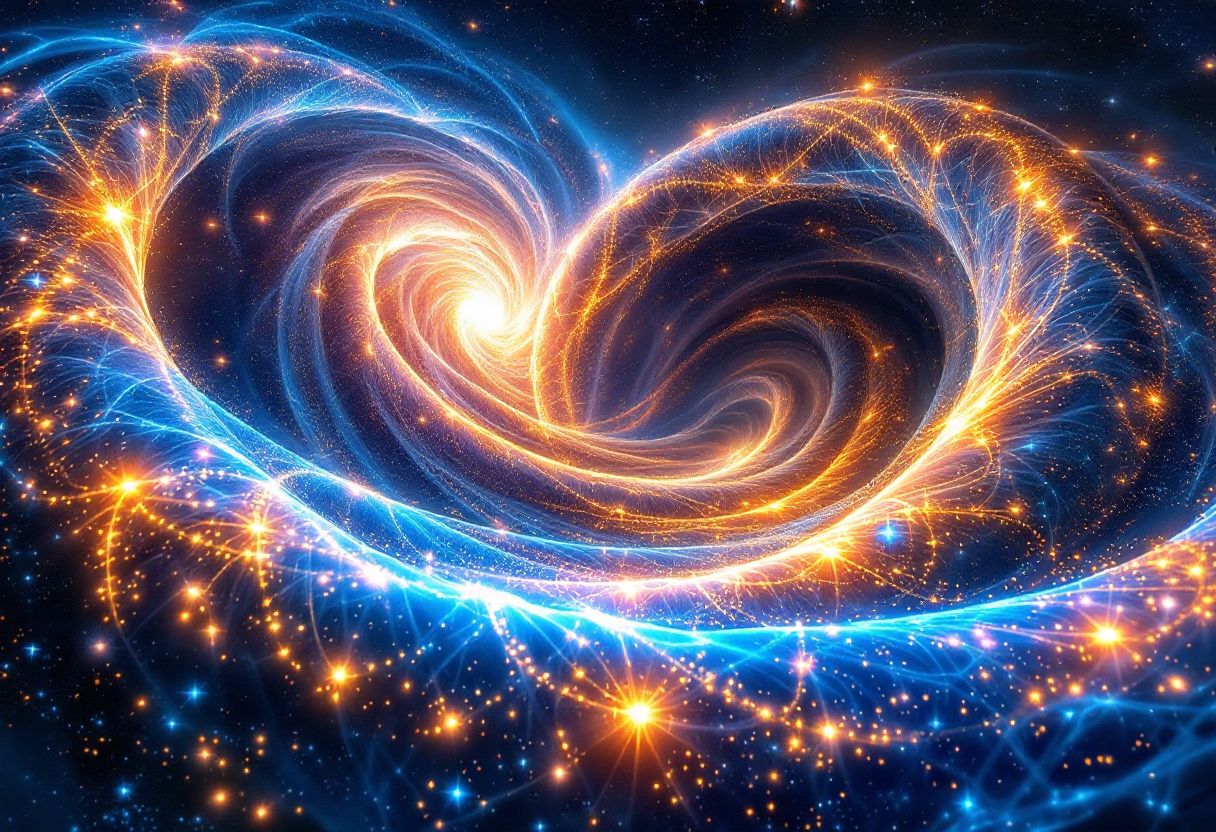Title: Nassim Haramein
Description: Explore Nassim Haramein's revolutionary theory of the toroidal universe, where energy and information flow in dynamic, fractal patterns across all scales—from quantum particles to galaxies. Discover how this geometric model challenges conventional physics and reveals a deeply interconnected cosmos.
Author: Alloya Huckfield
tags:
- Nassim-Haramein
- toroidal-universe
- fractal-energy
icon: LiAsterisknassim-haramein
The Toroidal Universe: Nassim Haramein’s Vision of Energy and Information Flow
Nassim Haramein, a physicist and researcher known for his unconventional yet deeply integrative theories, posits that toroidal geometry is fundamental to the structure and dynamics of the universe. His work suggests that energy and information circulate in toroidal (doughnut-shaped) patterns at all scales, from the quantum to the cosmic. This perspective challenges traditional linear and mechanistic models of physics, proposing instead a universe that is holographic, fractal, and deeply interconnected through these dynamic, self-sustaining vortices.
The Torus as a Universal Pattern
A torus is a three-dimensional geometric shape resembling a ring or a doughnut, characterized by a central axis, a continuous surface, and a dynamic flow where energy moves inward and outward simultaneously. Haramein argues that this form is not merely a mathematical abstraction but a fundamental template observable in nature, technology, and cosmic structures. From the magnetic fields of planets and stars to the shape of human energy fields (as described in various esoteric traditions), the torus appears as a recurring motif.
At the quantum level, Haramein’s research suggests that even the vacuum of space—often considered "empty"—is teeming with fluctuations of energy that organize themselves into toroidal vortices. These fluctuations, he argues, are the basis of matter itself, where particles emerge from and dissolve back into the fabric of spacetime through these dynamic, spinning structures. This aligns with certain interpretations of quantum field theory, where particles are excitations of underlying fields, though Haramein extends this idea into a more unified, geometric framework.
The Dynamics of Energy and Information
One of Haramein’s key assertions is that the torus represents a self-sustaining system where energy is perpetually recycled. In this model, energy flows from the center outward in an expansive phase, then curves back inward in a contractive phase, creating a feedback loop. This mirrors many natural systems—hurricanes, magnetic fields, and even biological organisms exhibit toroidal energy flows. For instance, the human heart’s electromagnetic field is toroidal, and some researchers suggest that consciousness itself may operate through similar fractal, recursive patterns.
Haramein connects this to information exchange, proposing that the universe is a vast, holographic network where every point contains the information of the whole. The toroidal flow allows for both the localization of energy (creating discrete structures like atoms or galaxies) and non-local connectivity (enabling instantaneous information transfer across vast distances). This challenges classical notions of separation, suggesting instead that the universe is a single, indivisible system where "empty space" is actually a plenum of infinite energy potential.
Black Holes and the Cosmic Torus
A significant aspect of Haramein’s theory involves reinterpreting black holes not as destructive anomalies but as fundamental, creative structures at every scale. He proposes that all matter—from atoms to stars—contains a miniature black hole at its core, which generates the spin and stability of the system. These "mini black holes" are not the infinitely dense singularities of traditional astrophysics but rather dynamic, toroidal vortices that balance inflow and outflow.
In this view, galaxies themselves are massive toroidal systems with black holes at their centers, acting as energy conduits between different dimensional scales. The spiral arms of galaxies, the accretion disks around black holes, and even the distribution of cosmic microwave background radiation can be understood as expressions of toroidal dynamics. Haramein’s "Holofractographic Universe" theory suggests that these patterns repeat fractally, meaning the same geometry governs the very small and the very large.
Implications for Physics and Consciousness
Haramein’s ideas, while controversial in mainstream physics, offer a bridge between science and metaphysics. If energy and information truly circulate in toroidal patterns at all scales, this implies a universe that is inherently alive, self-organizing, and conscious in some fundamental way. It resonates with ancient spiritual concepts such as the "sacred geometry" of the Flower of Life, the Hindu notion of the cosmos as a spinning chakra (wheel), or the Taoist understanding of cyclical energy (Qi) flow.
Modern physics has already begun to explore similar ideas through theories like loop quantum gravity and the holographic principle, which suggest that spacetime is quantized and information is encoded on boundary surfaces. Haramein’s contribution lies in synthesizing these cutting-edge theories with observable geometric patterns, proposing that the torus is the missing link in a grand unified theory.
Nassim Haramein’s vision of a toroidal universe presents a compelling narrative of interconnectedness, where energy, matter, and consciousness are woven together through dynamic, spinning geometries. By recognizing the torus as a fundamental pattern, we may unlock new understandings of gravity, quantum mechanics, and the very fabric of spacetime. Whether through the lens of advanced theoretical physics or ancient wisdom traditions, the torus emerges as a symbol of balance, perpetual motion, and the infinite dance of creation and dissolution. In a world increasingly defined by fragmentation, Haramein’s work invites us to perceive the underlying unity of all things—a universe where everything is connected through the timeless flow of the torus.

